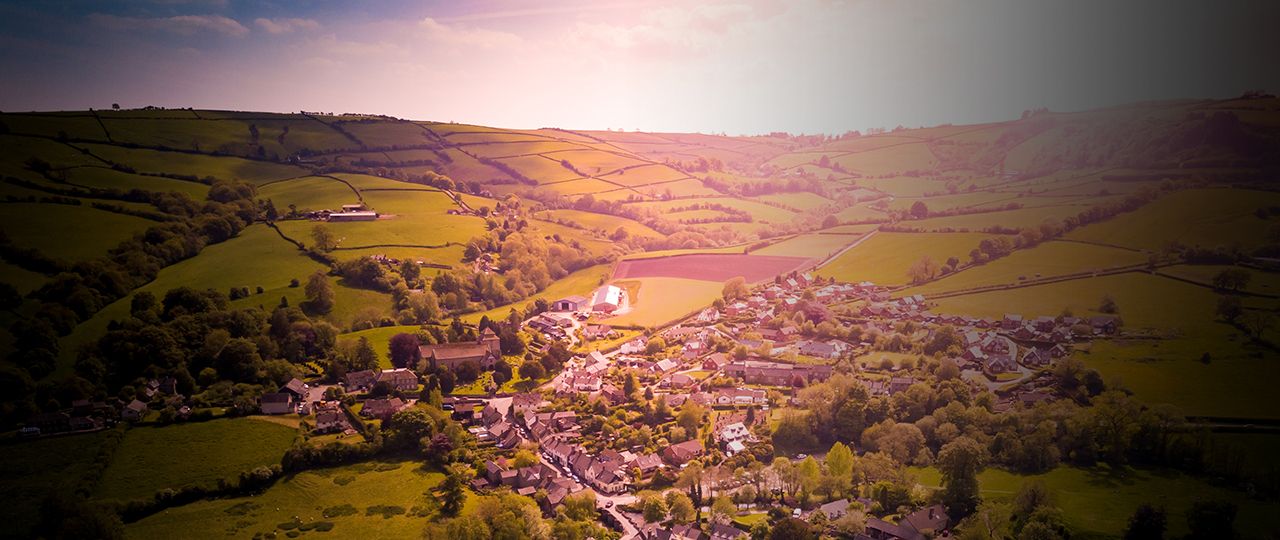
Vanessa Hale
Director, Research


Director, Research
The COVID-19 pandemic has highlighted just how crucial high-speed broadband and digital connectivity are for every household across the country.
From working and learning online, to staying connected with friends and loved ones; over the last year broadband and mobile connections have been as essential to everyday life as utilities like electricity and running water.
This is precisely why digital connectivity must not be taken for granted. However, disappointingly, Ofcom estimates as many as 9.6 million homes and businesses in rural areas are lagging behind in terms of internet service, simply because the infrastructure is not in place for them to access it.
So, to what extent is our new dependence on digital connectivity affecting how we view our homes and what, if anything, is being done to improve rural connectivity across the UK?
Our new connected landscape
Even before the pandemic, a speedy internet connection was considered an everyday essential, allowing us to access services, research information, shop online and communicate with others at home and abroad. Now, with the added necessity of homeworking, which is prevalent to so many of our livelihoods, any home without good broadband is placed at an unfair disadvantage.
In 2015, 41% people cited broadband services as being important in their decision of where to live – a figure that has been rising steadily over the past five years. Indeed, Strutt & Parker’s latest Housing Futures survey revealed almost two-thirds (64%) of home movers were looking for better internet and WIFI connectivity in their next home. For many people, it has become a real motivation for moving, particularly for those living in remote rural areas with poor digital connectivity.
The Centre for Economics & Business Research has calculated that a country-wide full-fibre broadband network would enable at least 400,000 more people to work from home or remotely, thereby saving 300 million commuting trips every year.
Vanessa Hale, Head of Insights & Residential Research at Strutt & Parker, offered her insight, declaring “rapid action” needs to be taken to help connect those living in rural communities.
She said: “Across the UK, there is wide disparity between the availability of full-fibre broadband in our urban areas compared to the countryside. This is particularly relevant in rural areas such as the Scottish Highlands and the Welsh Valleys.
“Rapid action to improve broadband speeds in more remote communities needs to take place for the benefit of the whole of the UK.”
Improving rural connectivity
Thankfully, the Government has been working to collaborate with the UK’s national telecommunications businesses in response to the disparity in connected services, with a number of new schemes and initiatives being put into action.
BT OpenReach offers one such example, having recently unveiled plans to guarantee the building of a full-fibre broadband network aiming to reach 3.2 million homes and businesses in hard-to-reach locations over the next three years.
The Gigabit Broadband Voucher Scheme is another government funded initiative, supporting the cost of installing gigabit broadband to homes and businesses in rural areas. Under the scheme, rural property owners with broadband speeds of less than 100Mbps can apply for vouchers worth up to £1,500 per home and up to £3,500 for small to medium-sized businesses (SMEs) to support the cost of installing new fast and reliable connections.
Meanwhile, in addition to extending broadband connections, the Shared Rural Network (SRN) aims to improve connectivity above ground via mobile networks.
Back in March 2020, government ministers made a £1 billion deal with the four major UK mobile operators, EE, O2, Three and Vodafone, investing in a network of new and improved phone masts. The aim is for all four mobile network operators to be able to deliver 95% combined coverage across the whole of the UK by the end of 2025, extending guaranteed internet access to 280,000 premises and 16,000km of roads, with the biggest coverage improvements happening in rural parts of Scotland, Northern Ireland and Wales.
Wales, Northern Ireland and Scotland also have their own initiatives ongoing, in a bid to improve the coverage of superfast and full fibre broadband in their most isolated areas.
Understanding your internet
Some types of internet provide a faster, more reliable connection than others. This means the speed of your internet could be directly related to the type of broadband being delivered to your home.
Here are how these four types of broadband connect you to the internet:
ADSL or ‘standard’ broadband connects you to the internet via a copper wire connection between your home and your local exchange. The internet flows through a copper cable to your home, connecting to your router via a socket. Your router then converts this into a radio signal that broadcasts around your house wirelessly, so you can access the internet on any of your wireless devices.
Fibre to the Premises (FTTP) connects you to the internet through a fibre connection between your local exchange and the router in your home. This type of internet should provide faster speeds than those delivered through copper telephone lines.
Gigabit broadband is an internet connection that guarantees a minimum speed of one gigabit per second. This type of broadband is delivered through a fixed-line connection using fibre optic lines.
When you cannot connect to the internet via a fixed line, mobile broadband provides you with internet access via a 4G network. This type of broadband is largely dependent on the strength of the signal in your area, the network your 4G is provided through and your general proximity to the nearest phone mast.
There is no denying the way we view our homes is changing in response to our current circumstances.